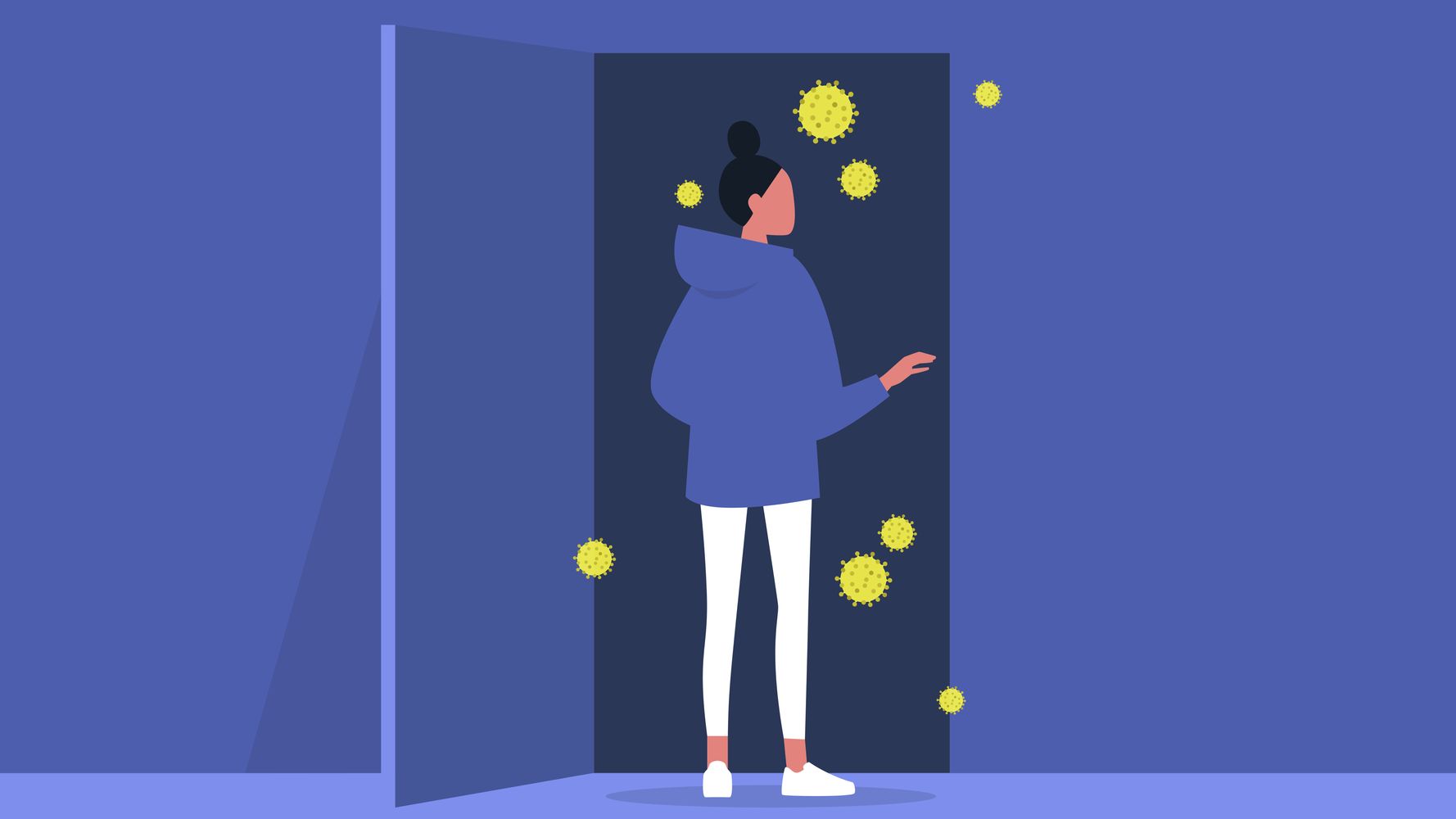[ad_1]

What we know about COVID-19 seems to change by the minute.
It’s understandable, given the massive scale of the global pandemic. Right now, there are more than 47 million known cases around the world and counting. The virus is also relatively new to the medical world, so researchers are learning as they go.
The amount of information out there is dizzying. It’s hard to keep track of what’s known, what’s a myth and what guidance we should follow. That’s why we’ve rounded up the following new things we learned about COVID-19 in October:
1. Who is considered a “close contact” in regard to COVID-19 exposure.
In late October, the Centers for Disease Control and Prevention issued a new guideline about what it means to have been in “close contact” with someone infected with COVID-19.
As HuffPost’s senior wellness editor, Lindsay Holmes, explained: “The CDC previously defined close contact as being within 6 feet of someone infected with COVID-19 for at least 15 minutes or more. The updated guidance now defines close contact as being within 6 feet of someone with the virus for a cumulative total of 15 minutes (or more) over a 24-hour period.”
The change is rooted in new information from a prison guard who came down with COVID-19 after spending 17 minutes with infected individuals over the course of a work day, not all at once. (He wore a mask, but there were times during the day when he was with individuals who did not.)
And the new definition matters for a few reasons. As Holmes pointed out, contact tracers will now need to consider a much broader pool of individuals when notifying people about potential exposures. And it will likely change how schools and offices handle positive cases. If, say, a child is exposed to a person with COVID-19 for five minutes at three points during the day, there may need to be considerations for quarantine.
2. Reinfection is possible, but we don’t need to panic yet.
Last month, the United States recorded its first case of COVID-19 reinfection in an otherwise healthy 25-year-old who came down with the virus twice. (There had been a handful of confirmed instances of reinfection elsewhere in the world prior to that.)
The news was unsettling for a few reasons. It happened relatively quickly, so the patient first got sick in April, recovered, then fell ill with COVID-19 again in June. Also, his second round of illness was much more severe and required hospitalization.
But experts have cautioned against freaking out too much. While reinfection has now been shown to be possible, it appears to be extremely rare as of now.
Moreover, the same strategies that protect against a first COVID-19 infection also protect against a second round: hand-washing, physical distancing and wearing face masks.
3. Antibodies probably last around five months.
Scientists have been wondering how long a person is immune to COVID-19 after they get infected. While there are always exceptions, a major new study released in October suggests that most people who have mild to moderate COVID-19 infections have antibodies for around five months.
The research is a pretty important contribution to our collective understanding of how COVID-19 antibodies work because it included more than 30,000 people.
“More than 90% of people who were mildly or moderately ill produce an antibody response strong enough to neutralize the virus, and the response is maintained for many months,” said study researcher Florian Krammer, a professor of vaccinology at New York City’s Icahn School of Medicine at Mount Sinai in a press release.
It is pretty typical for antibodies to diminish and then disappear over time. Also, just because a person no longer has antibodies does not mean they’ve necessarily lost immunity — how that all works with COVID-19 is still being researched.
In the meantime, it’s just as important as ever for everyone — including people who’ve been infected and are in that five-month window — to wear a mask.
4. Day cares are probably pretty safe.
During the pandemic, schools and child care centers (and therefore teachers, caregivers and parents) have been struggling to make decisions about when their facilities should close or open, and whether it’s safe for children to spend time in groups. There just has not been a lot of data so far.
In October, the first major study of how child care settings like day cares and preschools might contribute to the spread of COVID-19 found that they’re actually doing pretty well at controlling it.
Researchers analyzed child care centers that stayed open throughout the pandemic and found that employees who watched those kids all day were not at any greater risk of contracting COVID-19 than they would have been otherwise.
This suggests that kids under the age of 6 (which is the age group the study focused on) probably aren’t COVID-19 superspreaders, even if they’re together in a group setting all day.
And the study was large, including more than 57,000 child care centers across the U.S.
The research did not look at how COVID-19 may have spread from child to child. Nor did it find that there was absolutely no risk. There were still cases of day care staff getting COVID-19 during the period of the study.
Perhaps most importantly, day cares were generally very good about preventive measures, especially hand-washing and disinfecting frequently. (Many centers did not require masks.)
5. Some COVID-19 cases may age the brain by 10 years.
Researchers are starting to get a better handle on the many ways COVID-19 can affect the body. A pretty startling (but still preliminary) new study suggests the virus may be associated with significant mental decline in some cases.
Researchers in the United Kingdom analyzed results from more than 84,000 people who’d taken an “intelligence” test, which asked them to solve puzzles and remember words and images. They found that some test-takers who had had COVID-19 had an “equivalent to the average 10-year decline in global performance between the ages of 20 to 70,” the researchers said.
While the findings are definitely intriguing and point to another potential consequence of COVID-19, the study was not subject to peer review. And outside experts have urged caution, pointing out that the team behind the new study did not have important information like individuals’ scores pre-COVID. It’s also unclear how long these declines, if they are confirmed, may last.
Still, the new research provides clues about COVID-19′s long-term effects, and it’s certainly something experts will be paying attention to moving forward.
Experts are still learning about COVID-19. The information in this story is what was known or available as of publication, but guidance can change as scientists discover more about the virus. Please check the Centers for Disease Control and Prevention for the most updated recommendations.
[ad_2]
Source


